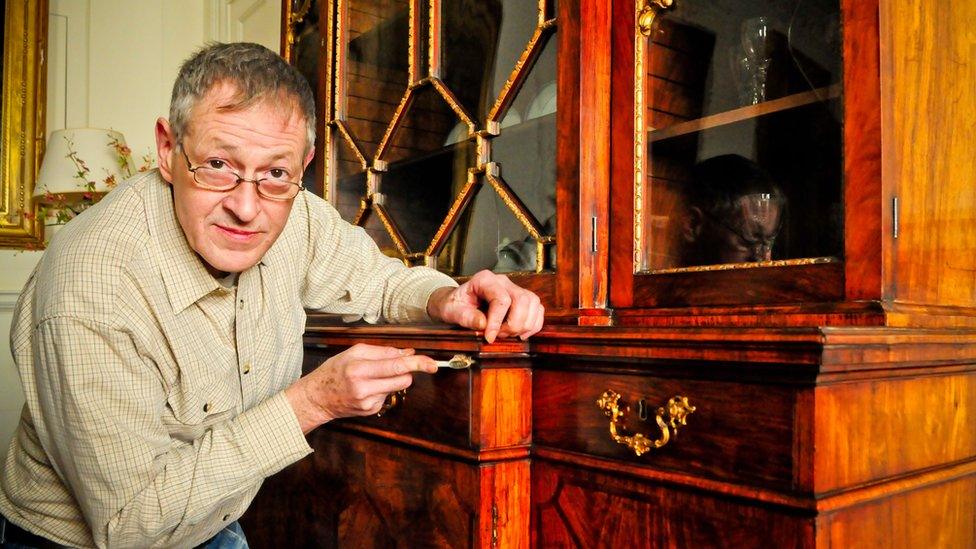The Prince of Wales, the oligarch and the stately home
- Published
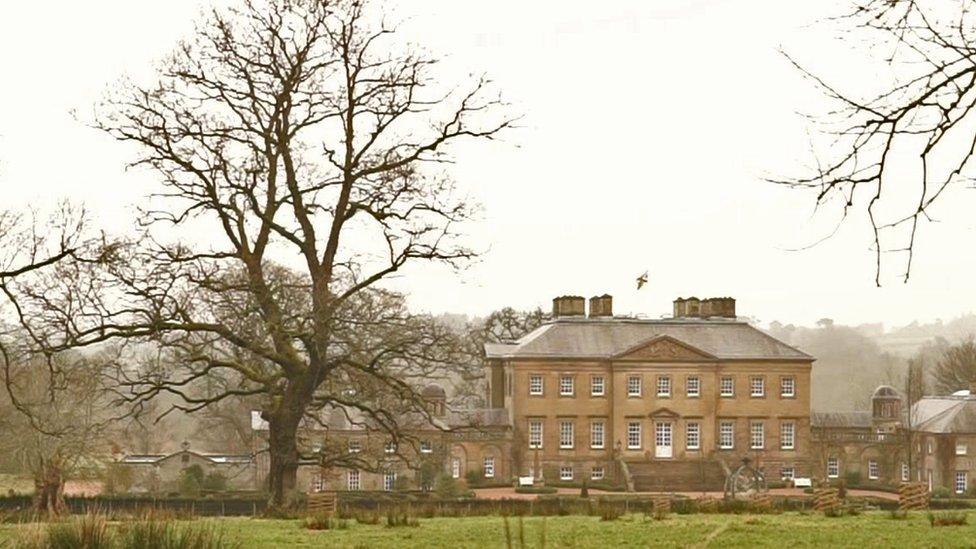
Dumfries House
In 2007 the Prince of Wales personally intervened in a last-minute bid to stop the sale of Dumfries House, a stately Ayrshire home with a precious collection of Chippendale furniture.
He wanted to stop the house and its contents being separated and sold off by their then owner, the Marquess of Bute.
He described how late in the day it was, telling a 2012 ITV documentary filmed at Dumfries House: "You know [the furnishings] were all in packing cases, all in lorries, everything, the labels on, it was all down there.
"We stopped them. The lorries were stopped at 1 o'clock in the morning on the motorway in Cumbria … on the way to Christies and turned around and came back."
The last-minute price for the house and its grounds was £45m. However, the efforts of the Prince of Wales to raise that sum from other charities fell short. In order to plug the gap, the Prince's Charities Foundation borrowed £20m.
The loan was secured on land nearby, which Prince Charles was confident his foundation could develop. The plan was to turn it into a model village akin to Poundbury in Dorset, to be called Knockroon.
The hope was that income from the town and tourism would support the estate and help to regenerate the neighbouring area.
The crash
Then came the 2008 financial collapse. By 2009 the value of the land, after planning permission was granted, was barely £9m, far less than the foundation owed, putting the loan in negative equity.
The prince, or the Duke of Rothesay as he is officially titled in Scotland, told ITV it was a "huge worry":
"You know you wake up in the middle of the night thinking 'help'. Cos having done the actual deal, then a year later or two years later the bottom fell out of the market didn't it? Overnight the value of everything went right down."
The foundation had to pay a higher interest rate, draining money away from other charitable causes.
To get out of the financial hole, the Prince's Charities Foundation had to pay down the debt. It managed to raise £5m from private donors.
One of the foundation's donors at the time was Ruben Vardanyan, a Russian banker from Armenia.

UWC Dilijan College, founded by Mr Vardanyan, and visited by Prince Charles in 2013
In 2013, the Prince of Wales paid a royal visit to Armenia, meeting Mr Vardanyan at the town of Dilijan where the banker and philanthropist was setting up a college.
An avenue of 65 sycamore trees at the college would be named Prince Charles Alley.
According to Mr Vardanyan's charities, in 2013 he and his wife were asked to gather a group of 'sponsors' to fund the renovation of a run-down farm building near the estate's west entrance, to become an upmarket guest house.
A returned compliment
The donors, who included a number of wealthy associates of Vardanyan's, would fund the creation of 16 luxury guest rooms at one wing of the guest house, to be called Dumfries House Lodge.
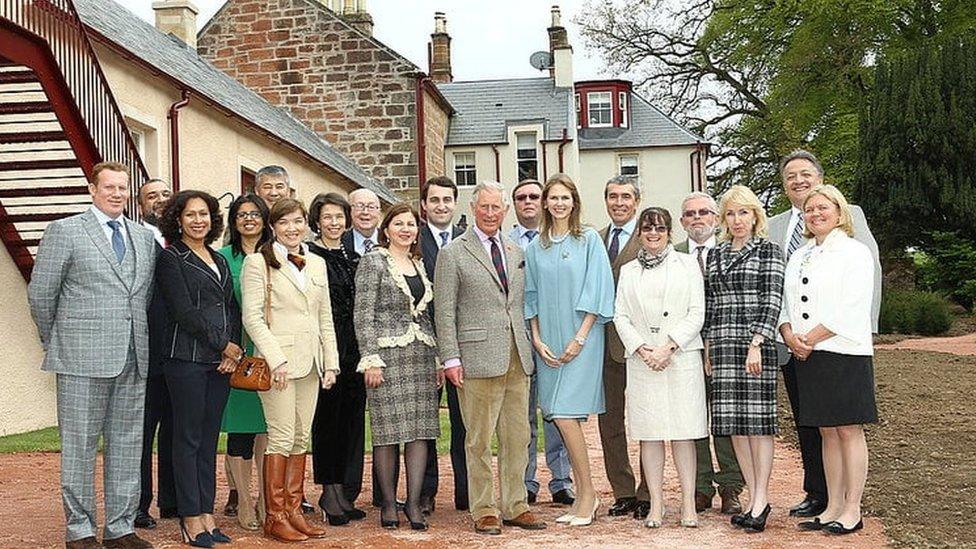
Prince Charles with a the delegation led by Mr Vardanyan, second from left, at Dumfries House in 2014
An annual review by Mr Vardanyan's Armenian college boasted of a 10-year partnership between the college and Dumfries House, which would also allow Armenian students to study at Dumfries House every year.
In 2014, the compliment was returned. Donors were invited to a Royal reception at Dumfries House, where Prince Charles met a delegation led by Mr Vardanyan.
The renovated wing of Dumfries House Lodge, previously known as The Mains Building, would be renamed "The Dilijan Building".
Investigation
An investment bank led by Mr Vardanyan managed a network of offshore companies moving billions out of Russia.
An international investigation has exposed how the network received money from companies linked to major fraud.
Mr Vardanyan has strongly denied knowing of any criminal activity. His lawyers told us he was not involved in the operations, management or activities of the wealth management arm of Troika Dialog Group, and that he has always acted in a transparent way.

The old Mains Building, renovated as "The Dilijan Building"
A spokesman for Clarence House said the Prince of Wales's charities operate independently of the prince himself in relation to all decisions around fundraising.
A spokesman for The Prince of Wales' Charitable Foundation and The Dumfries House Trust told us: "The charities apply robust due diligence processes. In the case of the examples highlighted, no red flags arose during those processes."
- Published4 March 2019
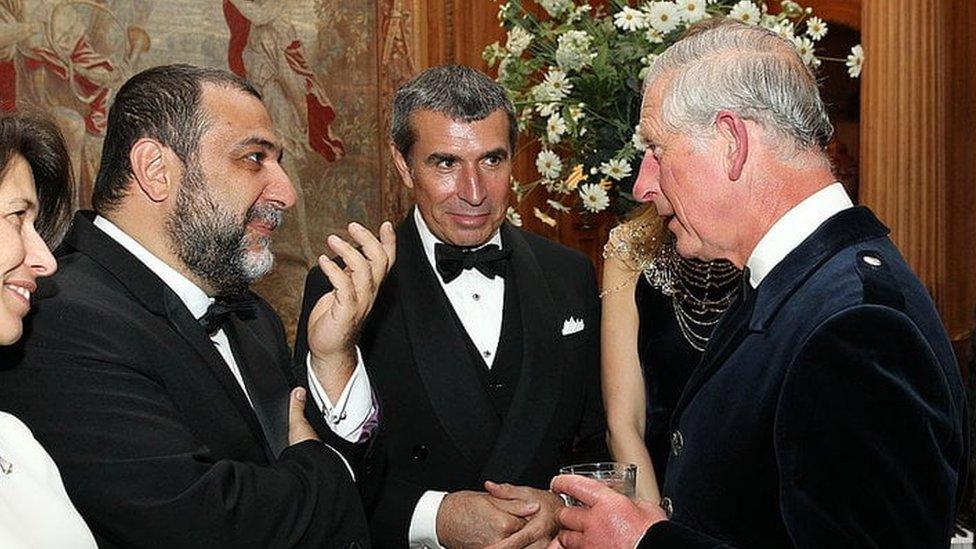
- Published10 January 2018
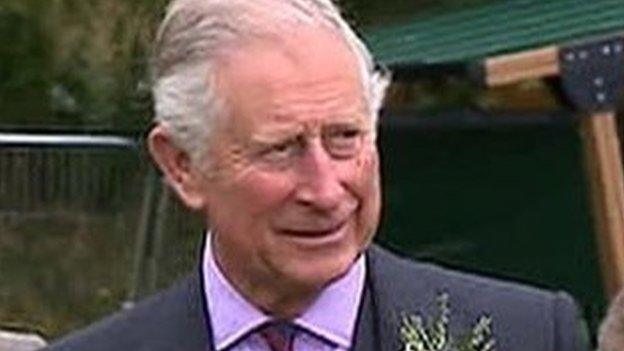
- Published31 May 2011

- Published13 January 2018
